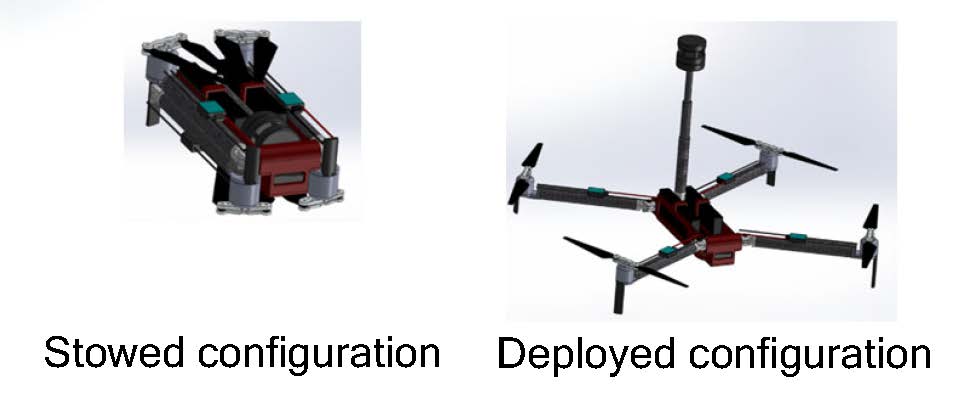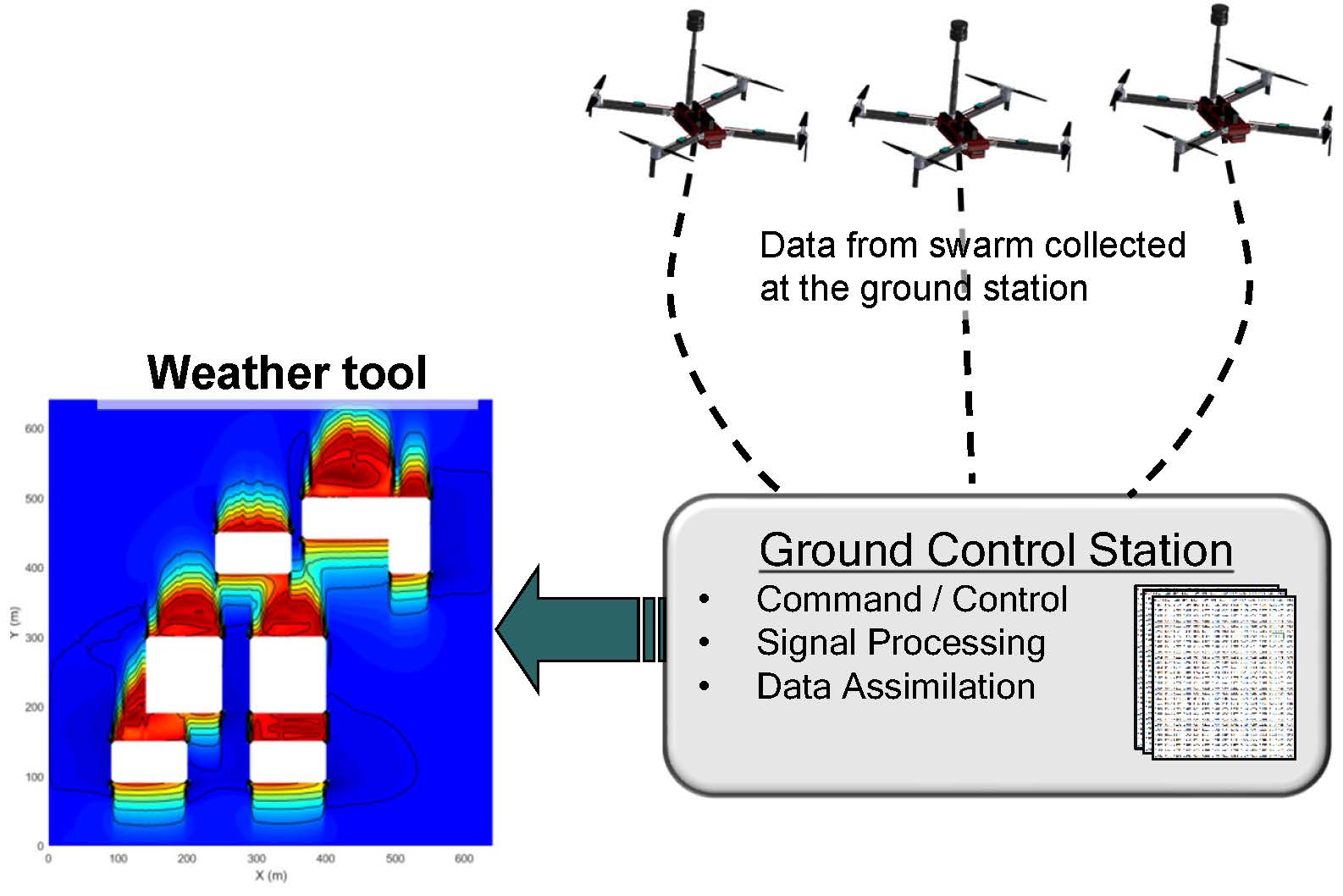WindSwarm: Efficiently Sample Atmospheric Data with Intelligent UAS Swarms
Why WindSwarm?
Accurate predictive and diagnostic meteorological tools serve a critical role in many military, civilian, and home defense applications. Mathematical formulations have been developed to model a wide variety of weather phenomena for a range of forecast times, topographies, and resolutions. To obtain accurate wind diagnostics in complex environments, forecast and diagnostics meteorological models benefit from initial condition data sampled at high spatiotemporal resolution. Efficiently obtaining these data in the past has been difficult due to non-mobile sensors, cost, and coarse sampling strategies. Unmanned aerial systems (UAS) provide an ideal platform to provide the initial condition data and many UAS have already been instrumented with a variety of meteorological sensors. The WindSwarm approach is unique in its ability to:
- Gather data using an UAS swarm or individual UAS,
- Integrates atmospheric sensors with a customized multirotor design, the μHawk;
- Offers a compact and modular solution; and
- Corrects for vehicle motion and rotor contamination.
WindSwarm effectively creates a “mobile meteorological tower” that is easily transported and provides accurate data for a variety of uses.
System Composition
WindSwarm is composed of three primary components and each can be offered individually, to integrate with existing systems, or as a complete package. These components are:
- μHawk UAS: A research quadrotor UAS with integrated with the FT205 ultrasonic anemometer, pressure, temperature, and relative humidity sensors. μHawk features folding arms for compact storage and a collapsible anemometer mast

- Swarm Autonomy: The Swarm Autonomy flight software extends basic autopilot capability, e.g., waypoint tracking to allow a swarm of UAS to gather high resolution spatiotemporal data in a coordinated and safe manner.
- Data Assimilation and Processing: Once the data are collected, advanced signal processing software prepares the data to be assimilated in the meteorological tool.

Technical Approach
WindSwarm is based on the following primary technologies:
- Customized UAV and meteorological sensor hardware integration to sample atmospheric variables at unprecedented spatiotemporal resolution;
- Autonomous swarm and cooperative behaviors allow for safe and efficient wind surveying in dynamic urban and complex terrain environments;
- Data assimilation techniques to improve diagnostic and predictive wind models
Application Areas
WindSwarm can be applied to a variety of disciplines and industries, including:
- Dispersion analysis of chemical, biological, or other aerosol agents;
- Improved modeling of the atmospheric boundary layer;
- Weather forecasting and nowcasting;
- Model verification;
- Other research areas.
Contact
For technical services and information, including a copy of the paper listed below, contact sales@barron-associates.com
Resources
Cooper, J., Neal, D., De Wekker, S., Reed, A., Andrekanic, A., and Paulini, M., “Atmospheric Sampling in Urban Areas and Complex Terrain using UAS Swarms”, VFS International 76th Annual Forum & Technology Display, Virginia Beach, VA, USA, October 6–8, 2020.
